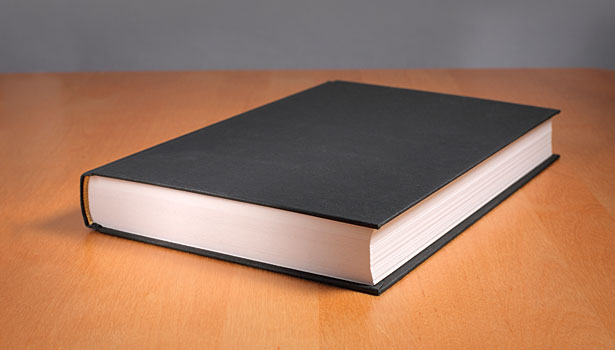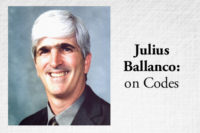It is hard to believe that in the second month of 2015 all the code changes for the 2018 edition of the International Plumbing Code, International Mechanical Code and International Fuel Gas Code have been submitted.
If you missed the deadline, the next possibility of appearing in any of these codes is the 2021 edition. That seems so far off, but that is the nature of the code profession when ICC converted to a single code-change cycle every three years.
The 2018 ICC cycle is the first complete use of its electronic system (www.cdpAccess.com). All code changes must be submitted through this website. The code changes will be published electronically and voting can take place for code officials on this website. The voting by code officials will occur after the public hearings.
The one nice feature of the cpdAccess website is that if you never have submitted a code change before, it is easy to follow the step-by-step process for preparing and submitting a proposal. The idea is to open the process to everyone.
ASPE — through its Legislative Committee — submitted a number of interesting changes to the IPC. One change that surely will have considerable debate is a proposal to require an equal number of female fixtures when the architect or designer increases the number of male fixtures. The idea is to maintain potty parity when additional fixtures are voluntarily added to a building.
A good example is the inclusion of urinals in a men’s room that goes beyond the minimum required. If five water closets are required in the women’s room and five water closets and urinals are required in the men’s room, it is not uncommon to find the men’s room with three water closets and four urinals. However, the women’s room only has five water closets. The proposed change would require an additional two water closets in the women’s room to assure potty parity and equal waiting time.
Some may consider such a requirement to be a penalty. While the concept may be foreign to the ICC membership, this provision has been in the IAPMO’s UPC for many editions. The fixture table in Chapter 4 does not allow the number of women’s water closets to be less than the combined number of men’s water closets and urinals.
High-water mark
Another ASPE change that should elicit debate is the maximum temperature setting of shower valves. Currently, the code requires the maximum temperature of 120° F to be set by the handle limit stop on the valve. The proposed change also would allow the maximum temperature setting to be set at the master thermostatic mixing valve for the building. This is occurring in the field without any problems.
If the master thermostatic mixing valve is set to a temperature below 120° F, then there is no setting of the handle on the individual shower valve. What setting would be used on the shower valve when the full opening of the hot water does not exceed 120° F? The change basically would allow what is already done in the field.
There are two changes to fixture requirements submitted by ASPE. One would mandate either a 1.28-gpf water closet for public buildings or a 1.6-gpf water closet with dual-flush capabilities. The concept is to save water. Whether using a dual-flush or a 1.28-gpf water closet, the idea is to save 20% of the water used for public water closets.
Safety first
The other fixture change is to emergency showers and eyewash stations. Currently, the IPC has no provision for tempering the water to emergency fixtures. As such, an ASSE 1070 thermostatic mixing valve could be used. The problem with using this valve for emergency fixtures is that it has a safety feature that can result in the water completely shutting off if the temperature cannot be properly balanced. This would be disastrous for an emergency fixture.
The proposal would require the installation of an ASSE 1071 device for temperature water to emergency fixtures. Only this valve would be permitted.
An ASSE 1071 valve is unique in that the cold water freely passes through the valve. Hot water is added to the cold water to temper the water for emergency fixtures. Hence, only the hot water has controlling components. If there is a failure of the valve, cold water still will run through the valve at the high rates of flow required for emergency fixtures.
On the design side, ASPE proposed a change to the combination waste and vent section to allow food-waste disposers on kitchen sinks to discharge through this type of venting system. The code currently prohibits food-waste disposers and clinical sinks from discharging to a combination waste and vent system.
This happens to be one of those code requirements where somebody simply guessed. An inspector for Oklahoma proposed the limitation many years ago because he perceived that a food-waste disposer and clinic sink are pumping action fixtures that would siphon the traps of other fixtures being vented by a combination waste and vent system.
The ASPE Research Foundation conducted a study and concluded that food-waste disposers do no create pumping action nor do they create any problem with a combination waste and vent system. The study proved that food-waste disposers work well when vented with a combination waste and vent system. All the other fixtures connected in the system also perform without any problems. One of the most difficult code changes to get approved is the removal of a limitation or restriction, even if such a limitation or restriction is arbitrary. Once in the code, it is more difficult to get out of the code.
ICC will not be publishing the code change book until the middle of March. At that time, you will be able to download the proposed changes. The first hearing on the plumbing, mechanical and fuel gas changes will be held April 19-30 in Memphis. If you cannot make it to Memphis, you will be able to view the hearings live on the ICC website.
HELPFUL LINKS:



